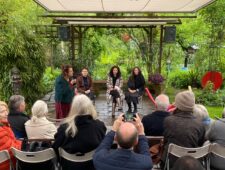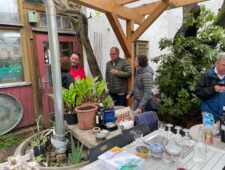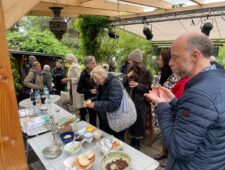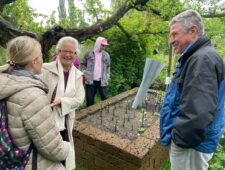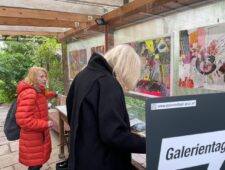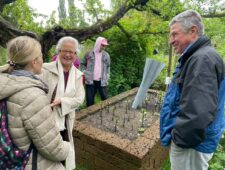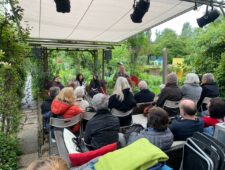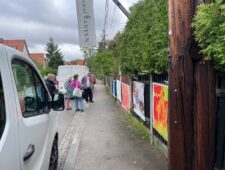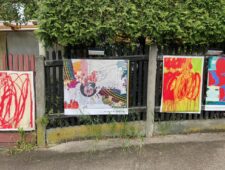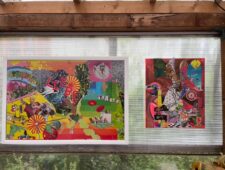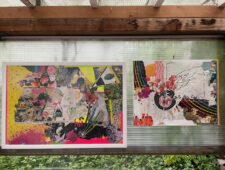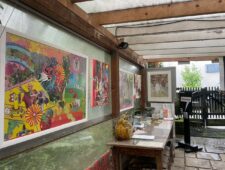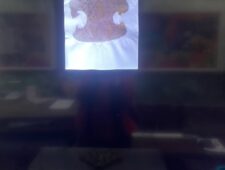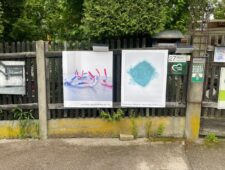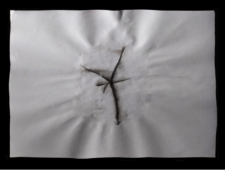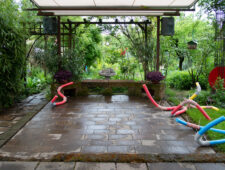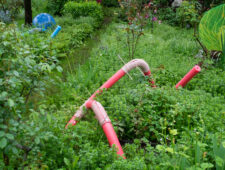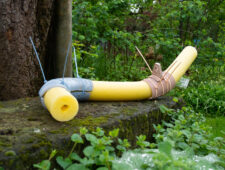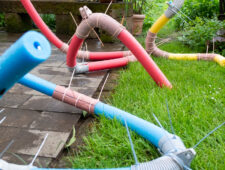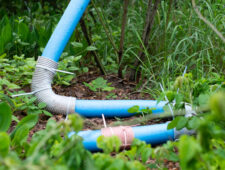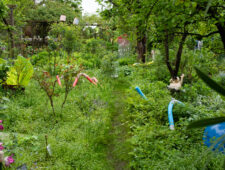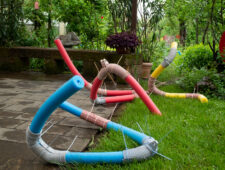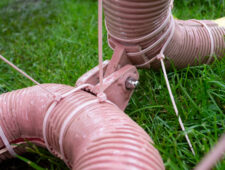Sarah Bildstein 100 Spectres 2021 (Ausschnitt)
Sarah Bildstein, Pao Kitsch, Zhenia Jane Laptiy (UKR) – REVIVING LIFE , Lisa Reiter & Hubert Schmalix approach the subject in different ways with their works in the areas of kunstGarten and Street Gallery.
Curator: Irmi Horn
Opening by Dr. Piffl-Percevic for Town councilor Dr. GĂĽnter Riegler & art historian Dr.in Tanja Gurke.
- 1. Opening 13. Mai 2023
- Opening 15:30
Each of us has already experienced a few May months in which he or she has felt this new desire for spring and the approaching summer life.
The last few years, dominated by weather catastrophes, storms, fires, floods, diseases of pandemic proportions, war in Europe have certainly dampened this joy, but May with its splendour of blossoms has nevertheless also conveyed strength and reminded us of the value nature has for us. What this reawakening means, how dependent we are on nature and how we can never point out enough to respect it and practise humility: Put a stop to exploitation! That would already be a good approach!

2. Opening 18:00 fĂĽr KUNSTFREUNDESKREIS & aktuelle kunst in graz
In the 1970s, as a politically aware person, I became involved in the teachers’ association and drew attention to the publication The Limits to Growth. Report of the Club of Rome on the State of Humanity from 1972, I was smiled at with pity:
“If the present increase in world population, industrialisation, pollution, food production and exploitation of natural resources continues unabated, the absolute limits to growth on earth will be reached in the course of the next hundred years.”
Today, after decades of demands and a few actions, science, which cares about the well-being of the Earth and its inhabitants, confirms the actions of young activists who want to give lame and lax world politics a bit of steam to get faster to the implementation of sensible regulations, e.g. 100 km/h limit on the motorway …
But science also shows that timely intervention and action leads to success:
THE BEGINNING OF HEALING.
For example, after the phasing out of harmful chemicals 30 years ago, the ban on chlorofluorocarbons (CFCs) from 1990 onwards, the hole in the ozone layer has shrunk and is expected to close everywhere by the mid-2060s. The gases have a lifespan of 50 to 100 years, so the chlorine molecules produced in the 1970s and 1980s are still in the atmosphere.
The ozone hole forms over Antarctica every year. Normally it begins in August and reaches its greatest extent in October. Researchers (Donald Blake, University of California Irvine, US and Kari Solomon, School of Earth and Environment, University of Leeds, UK) found that the hole appears to have shrunk by more than 4 million square kilometres in recent years, forming later, during the Southern Hemisphere spring. Also, it’s not as deep as it used to be.
So how will this continue with the water? How do we deal with each other? What is actually going on with gendering? Can we still enjoy something? Do we continue destroying? Can we still look with serenity and devotion, perceive and marvel in empathic understanding?
So let’s all be a little more courageous and looking to the future, let’s put away the stink of comfort. Let’s act!
Pao Kitsch
is a visual artist whose art is based on anti-capitalism and the materialisation of social problems such as child abuse and animal abuse in her works. She deals with childhood memories, the environment, urban redevelopment, nature, and human and animal rights. After completing her studies, she assisted in various art projects in different art techniques and is currently focusing on her music project.
2021-2022 Studium der Kunsttherapie/Art Therapy studies, Taller Mexicano de Arteterapia A.C.
2021 -2018 Master of Arts KHB Kunsthochschule Berlin-Weissensee, Berlin, (D)
Street Gallery 20230513
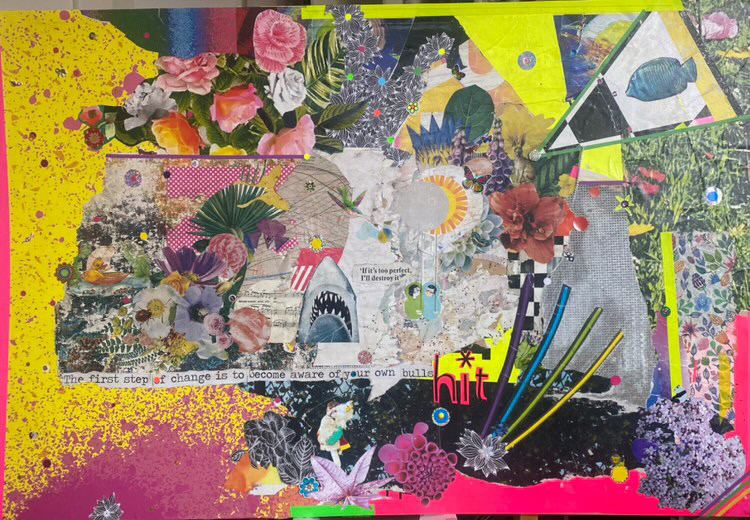
Pao Kitsch THE FIRST STEP OF CHANGE, Collage 2023
Since 2007 she has exhibited solo and in groups in the Old and New World with installations, performances and collages.
She also lives her calls for more kindness. She has been rescuing neglected dogs for over a decade.
- Street Gallery Pao Kitsch BE MORE KIND, Collage 2019, LWW Plane
- Pao Kitsch LIEBE UND TRAUER, Collage 2023/HAVING A LOVELY TIME 2019
- Pao Kitsch Collagen-View
- Street Gallery 20230513
Zhenia Yevgenia Laptiy is 30 years old. She was born in Kharkiv, Ukraine. She graduated from the Kharkiv Academy of Art and Design (specialising in “art history”). She has participated in various group and solo exhibitions in Ukraine, Italy, Germany, Portugal and Austria. She is a prize winner of the NonStopMedia competition 2018.
She began her career as a photographer in 2016, when she started her first photo project inspired by the nature and culture of her village in the Kharkiv region, where she had moved to in 2016. It played a big role in her development as an artist.

Tod & Vernichtung/Death & Destruction
Painterly landscapes, in a sense, neglect, freedom inspired me to create deeply romantic images, steeped in individuality and alienation from the world. I created photographs in which man is an integral part of nature, he is inscribed in the landscape, he complements it. Through the realisation “man is part of nature” came the realisation that the human body is his greatest “organ” of interaction with this world. Man is a part of the universe, and through the body he experiences the world. I believe that in our society the body functions in many ways as an element of propaganda, it is vulgarised and maligned, real intimate physicality is taboo. In my work I create my own mythological system in which the body lives in harmony with the environment, it is not taboo, it is not hidden, it lives according to the laws of the universe. In this I see an opportunity to change established cultural paradigms …
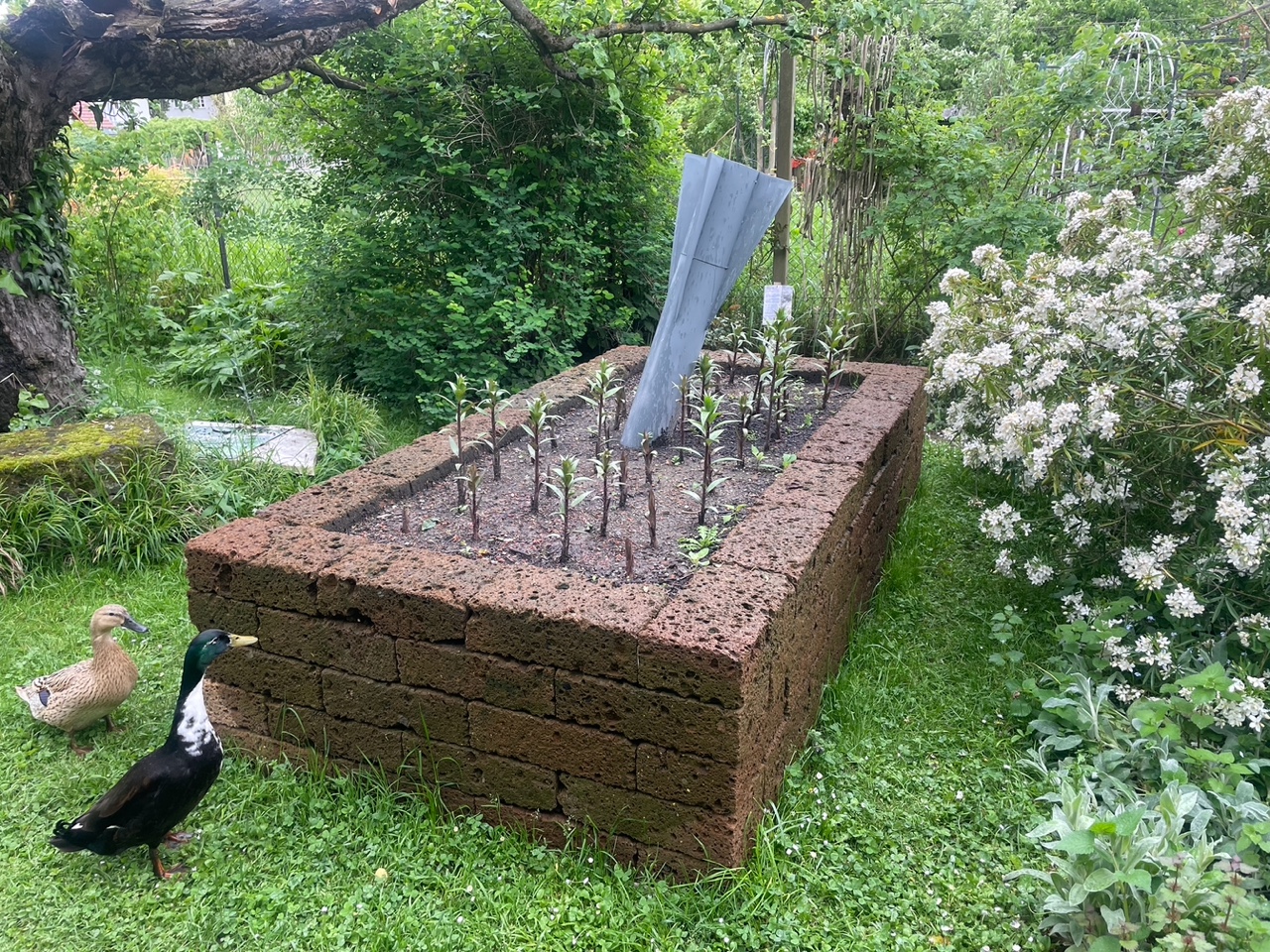
Zhenia Laptiy REVIVING LIFE The Lilies are growing …
The threat to this body of humanity inspired her work in the kunstGarten.
It is about the resurrection of life, the new beginning after destruction and annihilation. A grenade in her grandmother’s garden served as the occasion. It alludes to the suffering that people endure and to the will and strength to rise again from the ashes like a phoenix.
A symbolised destroyed garden, where lilies overgrow the grenade, is meant to show people what freedom and living in peace means.
Since 2018 she has been publishing and exhibiting solo – and in groups.
Sarah Bildstein presents some works and her book 100 Spectra.
The publisher VFMK writes:
Water is an essential component of human life, a strategic resource on earth and an important factor in many political conflicts. Artist Sarah Bildstein’s project 100 Spectres addresses the context of the water crisis and reflects on the causes and effects of climate change. In collaboration with scientists from the Zukunftskolleg at the University of Konstanz, 100 water samples from all over the world were analysed in the laboratory and transformed by chromatography. They appear as coagulated but at the same time flowing spectra on the paper.
The colour variety of the 100 pictures in this series goes back to a colour scheme that the artist developed on the basis of water values measured and determined with a pendulum. The index shows the individual origins and lists the water components and parameters for each of the 100 water samples that were decisive for the amount and concentration of colour used in each painting.
In this process, some part always remains unpredictable and open. The individual artworks are like outcomes that were unpredictable during the process of creation, much like a landscape is unknown to a traveller crossing it for the first time.
Sarah Bildstein, born in Feldkirch in 1987, lives in Vienna. Since 2011 Academy of Fine Arts Vienna, abstract painting; 2007 to 2012 KF University Graz, study art history, diploma 2012; 2007 to 2009 Ortwein School Graz, master class painting; 2006 to 2007 KF University Graz, study environmental systems science-geography; 2001 to 2006 Ortwein School Graz, art and design, sculpture.
- Sarah Bildstein „Sunken Garden“. Videoinstallation loop 08:43min 2020 Dokumentation Ebru Bilder print 21x29cm 2014
- Street Gallery Lisa Reiter I NEVER BROKE MY LEG/Sarah Bildstein Greece #010 Thessaloniki, Thermaic Gulf
- Sarah Bildstein Greece #010 Thessaloniki, Thermaic Gulf -Folie
- Lithuania #094 / Micronesia #074 je € 3200 Tinte/Tusche/Wasserproben auf Büttenpapier a 75 x 55 cm
- Sarah Bildstein Sunken Garden Videoinstallation loop 08:43min 2020 Dokumentation Ebru Bilder print 21x29cm 2014
In I never broke my leg, Lisa Reiter reflects on the assignment of gender roles, rigid constructs and the associated ideas. Based on the shapes of the human X and Y chromosomes, which define the biological sex of a person, she tries to work on and break up the binary system of gender. Lisa Reiter thematises a “being held in shape” in relation to the inflexibility of society.
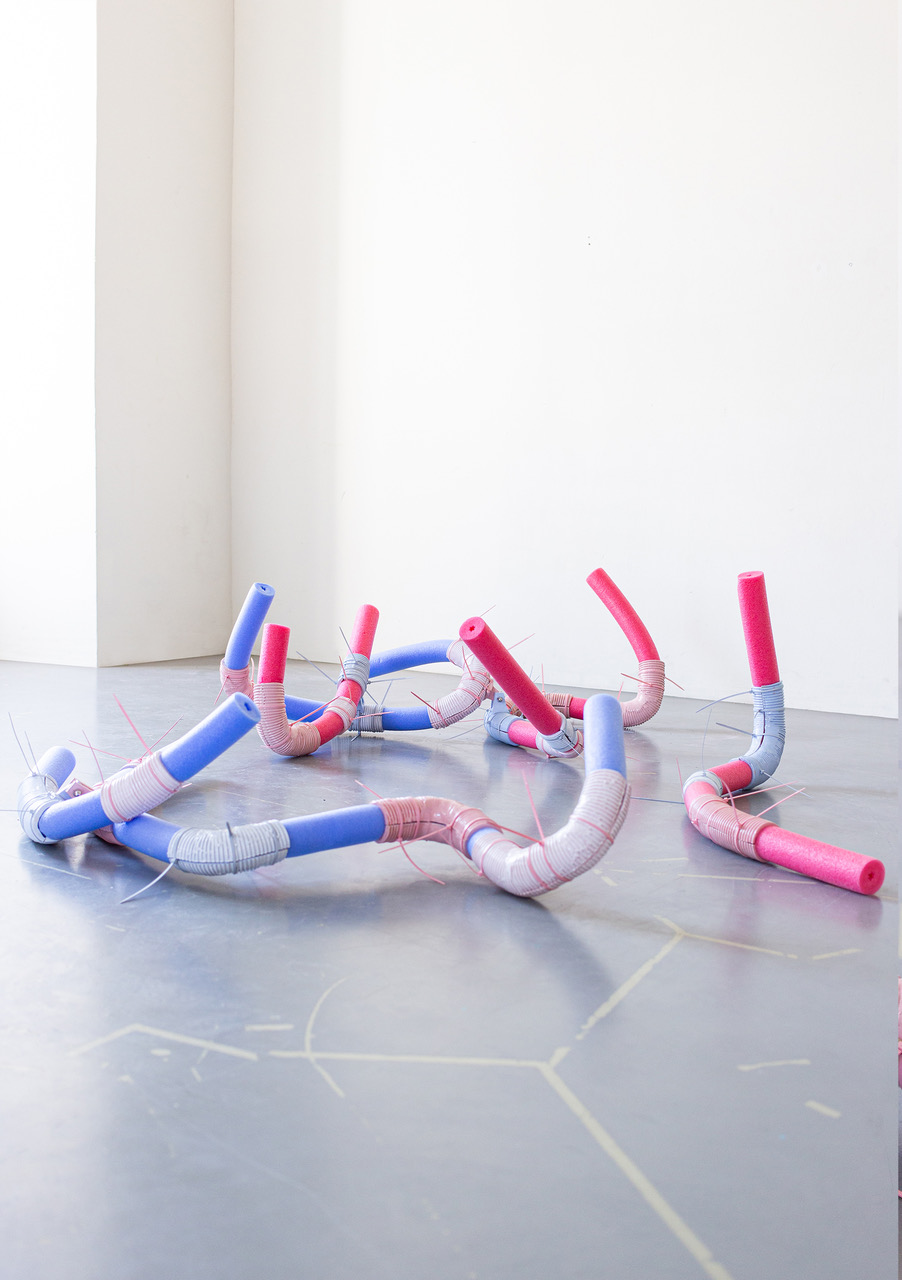
I never broke my leg Mehrteilige Installation Dimensionen variabel Keramik, Schwimmnudel, Stahl, Kabelbinder, Acryllack 2022/23
(c) Lisa Reiter
Lisa Reiter’s work is concerned with the understanding of bodies, our relationships to them in relation to societal expectations and social norms. She is currently working on phenomena such as tension, traction and pressure and is concerned with physical manifestations of such (permanent) states.
Lisa Reiter (*1994 in Upper Austria) studies in the Plastic Conceptions / Ceramics department at the Linz University of Art. In 2021 she was awarded the Morgenstern Prize of the Province of Styria and the Kleine Zeitung and also received the Art Promotion Prize of the City of Graz. Her works are represented in the Neue Galerie of the Universalmuseum Joanneum and in the collection of the City of Graz.
- Lisa Reiter I never broke my leg Mehrteilige Installation, Dimensionen variabel. Keramik, Schwimmnudel, Stahl, Kabelbinder, Acryllack 2022/23
- (c) Lisa Reiter
- (c) Lisa Reiter
- I never broke my leg, 2022/23(c) Lisa Reiter
- (c) Lisa Reiter
- (c) Lisa Reiter
- (c) Lisa Reiter
- (c) Lisa Reiter
- (c) Lisa Reiter
Hubert Schmalix, born in Graz in 1952, studied at the Academy of Fine Arts in Vienna under Max Melcher from 1971 to 1976. Schmalix belonged to the group of the “Neue Wilden” in the early 1980s. He had his first solo exhibition at the KĂĽnstlerhaus Wien in 1976. In 1984 Schmalix exhibited in Sydney at the Biennale, spent some time in the Philippines, then in the USA and moved to Los Angeles in 1987, where he still lives today. Figure, form and colour in changing interplay determine his work.
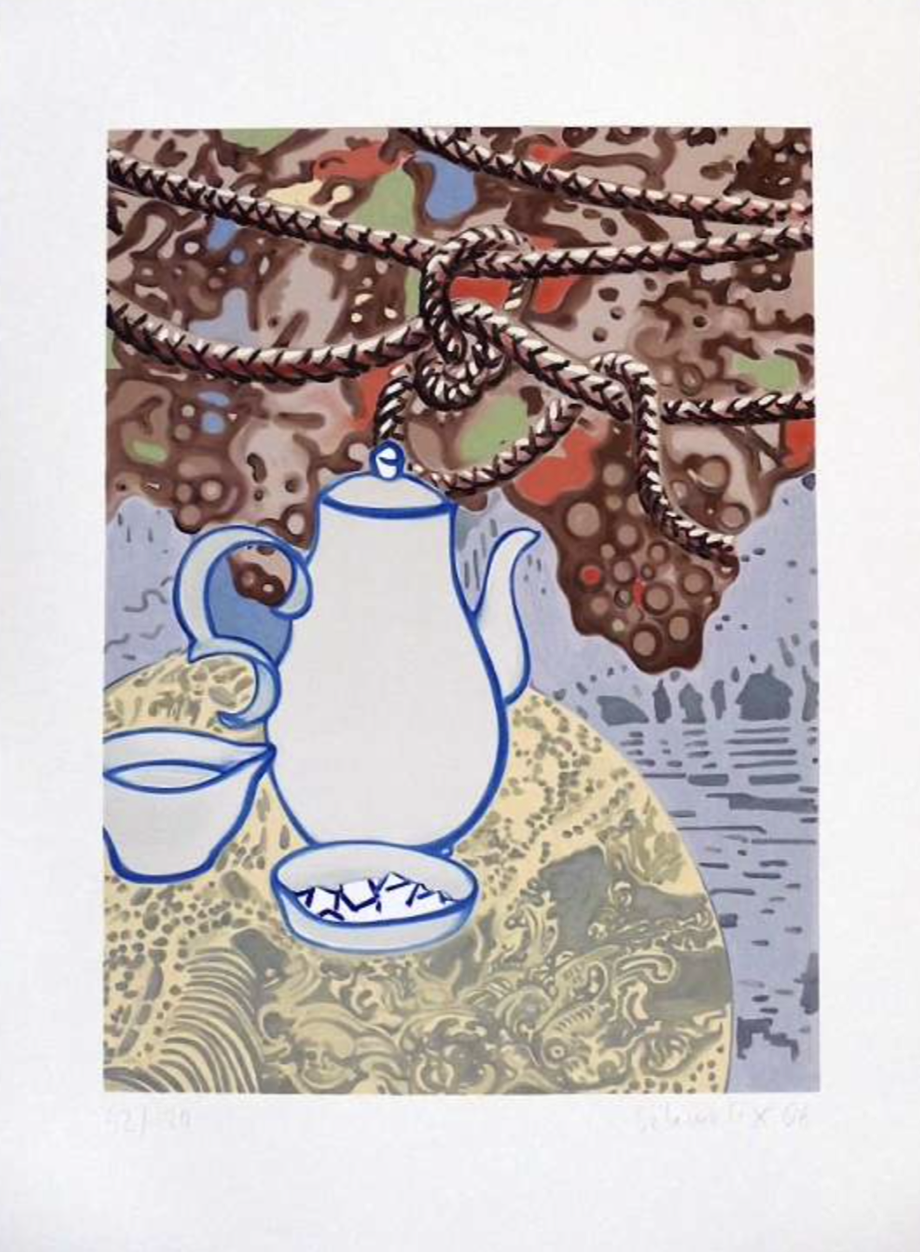
Hubert Schmalix TEATIME
Lithographie in Farbe von handsigniert, nummeriert Auflage 120 Exemplare. Format der Darstellung: 60x45cm, auf BĂĽttenPapier 80x60cm. datiert: 2006
Wilhelm Smolka’s description is very beautiful: “The motifs of his landscapes combine set pieces of bucolic scenarios such as mountains, alpine huts, waterfalls, bubbling brooks and washed-up wood into picturesque idylls. It is the permanent search for a locus amoenus that functions, if not as an existential perspective, then at least as a metaphor of a right life in the wrong.”
As enjoyable as TEATIME can be, as important as it is to cultivate this time of enjoyment, of quiet or conversation, or of alert awareness of all around us, however, we should all be aware of how the linkages between continents take place, how tea is grown and processed, under what conditions the people who grow and harvest it live.
“I am not a painter who paints light. I create light through colours. That is what makes the painter.” says Hubert Schmalix about his art. “You could also say I produce a light that doesn’t exist in reality.”
Hubert Schmalix lives and works in Los Angeles and Vienna.

TEATIME
 Lithographie 60x45cm, auf BüttenPapier 80x60cm. datiert: 2006
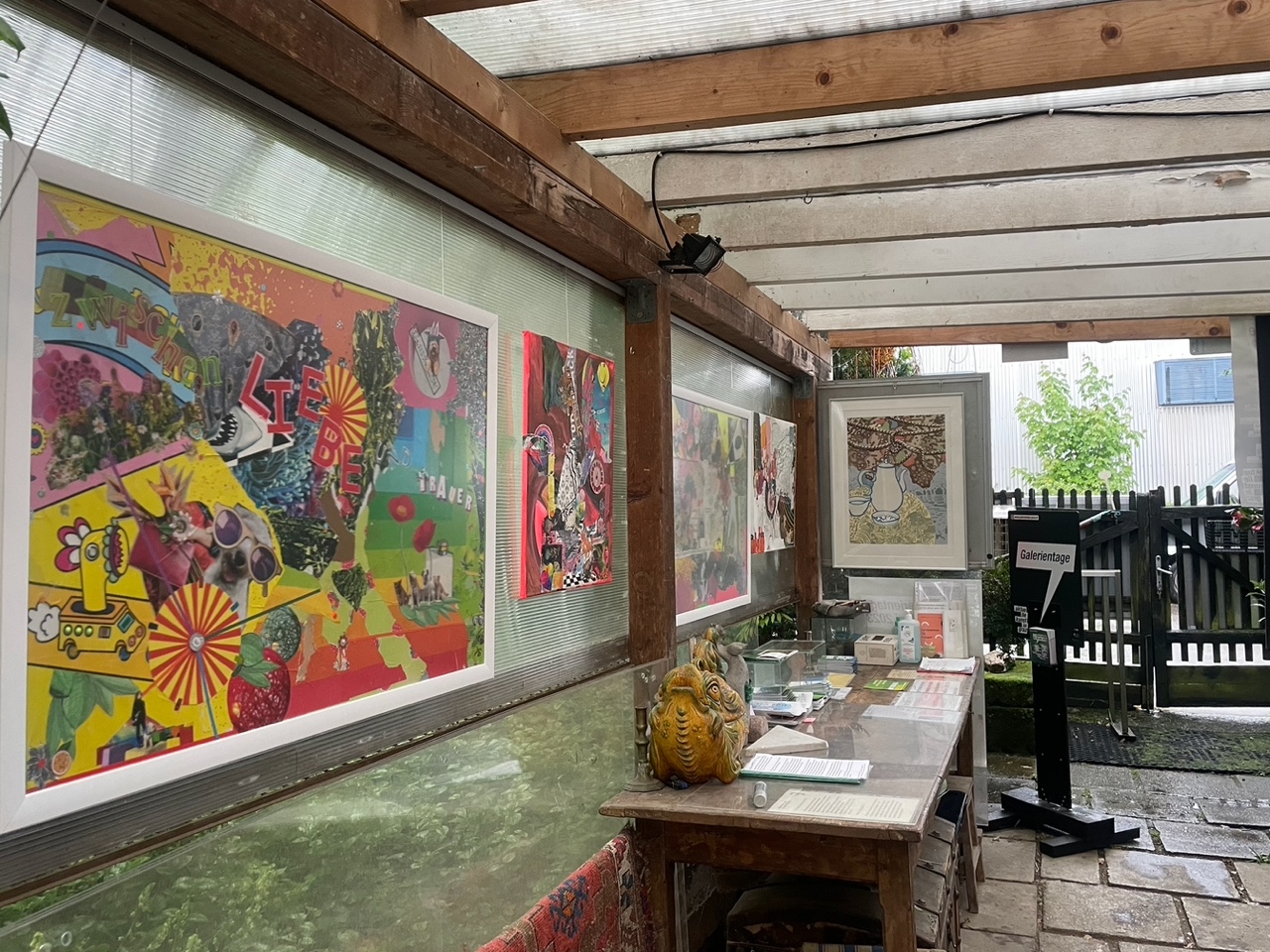
View
INFORMATION
- Please make reservations not later than 2 hours before the programme begins: kunstGarten@mur.at or +43 316 262787


